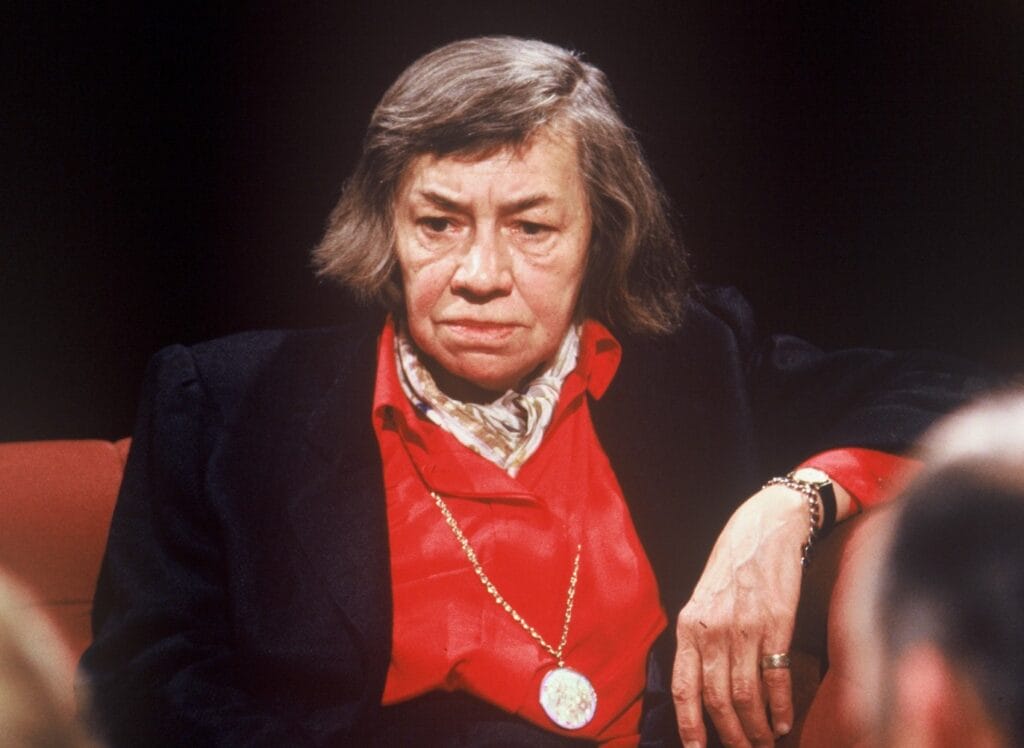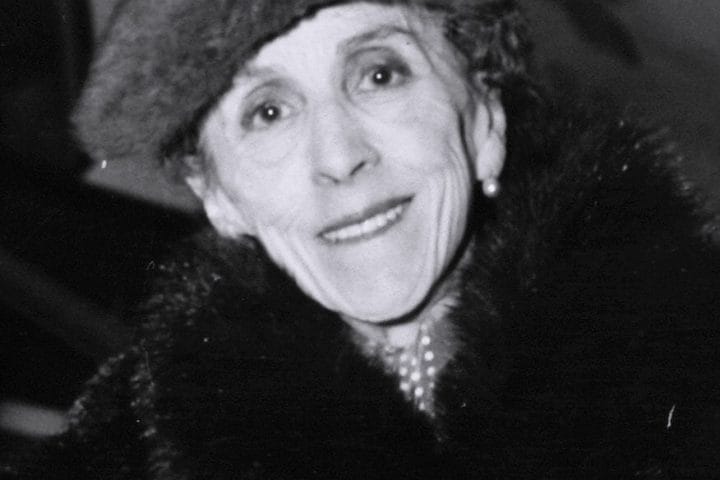Patricia Highsmith was an American novelist and short story writer, best known for her psychological thrillers and suspense novels. She was born on January 19, 1921 in Fort Worth, Texas and grew up in New York City. Highsmith studied at Barnard College and Columbia University before pursuing a career in writing. She gained widespread recognition for her debut novel “Strangers on a Train” which was later adapted into a popular film by Alfred Hitchcock.
Throughout her career, Highsmith wrote over 20 novels and numerous short stories, with many of her works being adapted into films or TV series. Her most famous creation is the character of Tom Ripley, an intelligent and charming sociopath who appears in five of her novels. Highsmith’s writing style often explored the dark side of human nature and delved into themes of obsession, guilt, and identity.
Despite critical acclaim for her writing, Highsmith struggled with personal issues such as alcoholism and depression throughout her life. She lived in various countries including France, England, Switzerland, and Italy before settling in Switzerland where she passed away on February 4, 1995 at the age of 74.
Today, Patricia Highsmith is considered one of the greatest crime writers of the 20th century and continues to influence modern authors with her gripping suspenseful storytelling. Her works have been translated into multiple languages and have gained a cult following among readers worldwide.

Early Life
Patricia Highsmith was born Mary Patricia Plangman on January 19, 1921 in Fort Worth, Texas. Her mother was an illustrator and her father was a graphic artist who worked in advertising. They divorced before she was born and she was raised primarily by her maternal grandmother in New York City.
Highsmith had a lonely childhood and struggled with her sexual identity from a young age. She was seen as an odd child who preferred the company of snails and cats over other children. Highsmith later described herself as a misfit who felt out of place as a child due to her ambiguous sexuality and artistic temperament. She kept notebooks of poetry from the age of 12 and lived in a fantasy world of her own creation. Despite her solitary tendencies, she formed a close bond with her mother and grandmother.
Education
Patricia Highsmith attended Barnard College in New York City where she studied English, Latin, and Greek. She was involved with the student literary magazine at Barnard. After graduating in 1942, she attended graduate school at Columbia University where she studied fiction writing and short story composition. She continued to write and publish short stories during her time at Columbia. Highsmith did not complete her graduate degree, instead pursuing a career as a comic book writer in the 1940s. She later said that she valued the time spent studying literature and creative writing in college, as it helped develop her distinctive writing style and voice.
Early Writing Career
After graduating from Barnard College in 1942, Patricia Highsmith struggled to get her writing published. She submitted short stories to magazines like Harper’s Bazaar and the New Yorker, only to continuously face rejection. To support herself, Highsmith held a string of jobs, including working in a doll factory and as a sales clerk in the children’s section of Bloomingdale’s department store.
Frustrated by the publishing world, Highsmith turned to comic book writing in the late 1940s and early 1950s. She scripted for many titles in the series “Romance Comics” published by Crestwood/Prize Comics. Though she considered it “hack work”, the comic book writing provided a steady paycheck. During this time, she continued submitting short stories to magazines and finally had her first story, “The Heroine”, published in the Harper’s Bazaar in 1945.
Highsmith’s first novel, Strangers on a Train, was rejected by her publisher Harper & Brothers. Undeterred, she persisted and continued honing her craft and style. Her short stories began appearing in Ellery Queen’s Mystery Magazine in the early 1950s. Highsmith’s second novel effort, The Price of Salt, was published in 1952 under the pseudonym Claire Morgan since it dealt with lesbian themes. Though she still faced challenges, Highsmith was beginning to gain recognition in publishing circles through her short fiction.
Breakout Success with Strangers on a Train
The 1950 novel Strangers on a Train was Highsmith’s big break as a writer. It was published by Harper & Brothers and sold close to 50,000 copies in its first six months, allowing her to leave her day job and focus on writing full-time.
Strangers on a Train centers around a chance encounter between two men, Charles Bruno and Guy Haines, on a train. Bruno proposes that they “exchange murders” – meaning Bruno will kill Guy’s estranged wife if Guy kills Bruno’s father. Guy does not take Bruno seriously, but Bruno proceeds to murder Guy’s wife. This forces Guy into a moral dilemma as Bruno pressures him to uphold his end of the supposed bargain.
The novel was well received by critics and helped cement Highsmith’s reputation for crafting intelligent psychological thrillers. The moral ambiguity of the characters and exploration of guilt and duality were noted for adding depth to what otherwise could have been a standard murder plot. The novel’s focus on the psychology of a murderer rather than the details of the murders themselves was relatively innovative for the genre at the time.
The successful adaptation of Strangers on a Train into an Alfred Hitchcock film in 1951 brought even wider exposure and popularity to Highsmith’s work. Though she did not author any sequels to Strangers on a Train, the novel’s critical and commercial success gave Highsmith the confidence and means to pursue her literary career with greater creative freedom.
The Talented Mr. Ripley and Other Novels
Patricia Highsmith’s most well-known work is the psychological thriller The Talented Mr. Ripley, published in 1955. This novel introduced her antihero Tom Ripley, a young con artist who murders a rich acquaintance and then impersonates him. The Talented Mr. Ripley explores themes of obsession, duplicity, and the fluid nature of identity that would become hallmarks of Highsmith’s fiction. Its European setting also established her reputation as a novelist of international intrigue.
The Talented Mr. Ripley was followed by four sequels, each depicting another of Tom Ripley’s amoral escapades. Highsmith’s Ripley novels grew more satirical over time, skewering upper-class pretensions. Her writing style also evolved, moving from the noir atmosphere of the first book toward black comedy.
In addition to the Ripley series, Highsmith wrote many psychological suspense novels often focused on criminals, con artists, and twisted relationships. Works such as The Cry of the Owl, This Sweet Sickness, and The Two Faces of January deal with obsession, identity confusion, and moral ambiguity. Highsmith also wrote numerous short stories, many of which share the disturbing tone and themes of abnormal psychology found in her novels. She preferred focusing on intimate personal dramas rather than action-driven plots.
Writing Process and Influences
Patricia Highsmith had some unique writing habits and drew inspiration from a range of literary influences. She often wrote while surrounded by snails in her garden and would even take them on trips with her. Highsmith also regularly drank while writing, keeping a glass of whiskey or gin by her typewriter.
Several authors were major influences on Highsmith’s writing style and themes. She was an avid reader of Dostoyevsky and admired how he delved into the psychological dimensions of his characters. Highsmith also appreciated Oscar Wilde’s talent for capturing human contradictions. The play Rope by Patrick Hamilton, which centers on two young men committing murder simply for the thrill of it, helped inspire the plot of Strangers on a Train.
Highsmith became known for her ability to build suspense through the inner lives of characters. She focused on the moral deterioration of protagonists who rationalize their dark urges and descent into crime. This psychological tension was a signature of her suspense technique. Rather than relying on violence, action and surprise twists, Highsmith built intrigue through the morally ambiguous minds of killers and swindlers. Her ability to get inside the heads of such characters and understand their twisted rationalizations impressed many other writers.
Personal Life
Patricia Highsmith led an unconventional personal life that often caused controversy. Though she briefly dated writer Marc Brandel, Highsmith never married or had children. She was openly lesbian at a time when homosexuality was taboo and illegal in many places.
Highsmith had numerous affairs with women throughout her life. One of her most significant relationships was with artist Carol Plant in the 1940s. In the early 1950s, she became romantically involved with sociologist Ellen Blumenthal Hill, who was married at the time. Their affair ended bitterly several years later.
In 1966, Highsmith began a relationship with author Marijane Meaker which lasted two years. She also had an intense on-again, off-again romance with artist Caroline Besterman that spanned decades. Highsmith tended to become infatuated with her lovers initially before eventually losing interest.
Highsmith did extensive traveling throughout Europe over the course of her life, living in England, France, Italy, and Switzerland for long stretches. She was fluent in French and admired European culture. However, she also faced occasional discrimination and hostility as an openly gay American woman abroad.
Highsmith cared deeply about social and political issues, supporting animal rights and opposing violence. She made financial contributions to many causes close to her heart. However, her strong opinions and prickly personality also frequently got her into trouble. She was known for her intensity, reclusiveness, and interest in the dark side of human nature.
Later Career and Death
In her later career, Highsmith received numerous awards and honors recognizing her significant contributions to literature. In 1980, she was awarded the O. Henry Award for her short story “The Snail Watcher.” She also received the Crime Writers’ Association Silver Dagger award in 1964 and 1975.
Highsmith’s final years were spent in Switzerland, where she had lived since the early 1960s. She continued writing and publishing new novels and stories, though her output slowed in her later years. Her health declined due to a combination of anemia, diabetes, and liver damage from excessive alcohol consumption. Highsmith died at the age of 74 in 1995 in Locarno, Switzerland.
After her death, Highsmith continued to receive posthumous recognition and critical reevaluation of her work. Many of her novels were adapted into films, introducing her writing to new audiences. In 2009, she was awarded the Outstanding Mystery Writer of the 20th Century award by the Mystery Writers of America. Her reputation as one of the most talented and influential crime writers of the 20th century has only grown over time.
Legacy
Patricia Highsmith left a profound impact on the suspense and thriller genres that is still felt today. Her psychological thrillers introduced darker, more complex characters and themes that broke conventions in mystery writing. She explored the moral ambiguity of the human psyche in a way that was unprecedented.
Highsmith inspired countless writers with her ability to get into the minds of criminals and create an uncomfortable intimacy between the reader and the often amoral protagonists. Writers like Ruth Rendell and Gillian Flynn have cited Highsmith as a major influence on their own psychologically complex crime novels. Her Tom Ripley character, in particular, established the template for the charming, brilliant psychopath antihero that still populates many thrillers.
Beyond her literary significance, Highsmith’s work also left a cultural mark. Her 1955 novel The Talented Mr. Ripley was adapted into a 1999 film starring Matt Damon, introducing her twisted characters to new audiences. The Ripley character continues to fascinate, with other actors like John Malkovich and Barry Pepper taking on the role in later adaptations. Films based on her other novels, especially Strangers on a Train, are considered classics.
So while Highsmith may not be a household name like Agatha Christie, her dark, psychologically penetrating stories helped evolve the thriller genre and still resonate with audiences. She expanded the boundaries of mystery fiction and left a legacy that modern suspense authors continue to build upon.
Notable Quotes
Patricia Highsmith was known for her insightful perspectives on writing, life, and human nature. Here are some of her most thought-provoking quotes:
On writing:
“It’s a wonderful relief, to realize that the act of writing corrects the thinking, as you go along.”
“I find writing not difficult, but I find getting started very difficult.”
On life:
“It is the possibility of emotional stimulation that attracts people to the novel.”
“The creative artist seems to be almost the only kind of man that you could never meet on neutral ground. You can only meet him as an artist. He sees nothing objectively because his own ego is always in the foreground of every picture.”
On human nature:
“I think most novelists have just one character, and they know that character so well that they can adapt it to any situation and any book that they’re writing.”
“I often get letters from readers who claim that not only have they solved the mystery in one of my novels, but that they have worked out, psychologically, the “why” of the crime itself. They have understood the criminal’s motives, they say. But the truth is, I don’t either. I’m not terribly interested in the criminal’s motives. My interest is in the effect on other people.”
Highsmith’s quotes reveal her insightful perspectives on writing, life, and human nature that contributed to her legacy as an acclaimed novelist.













